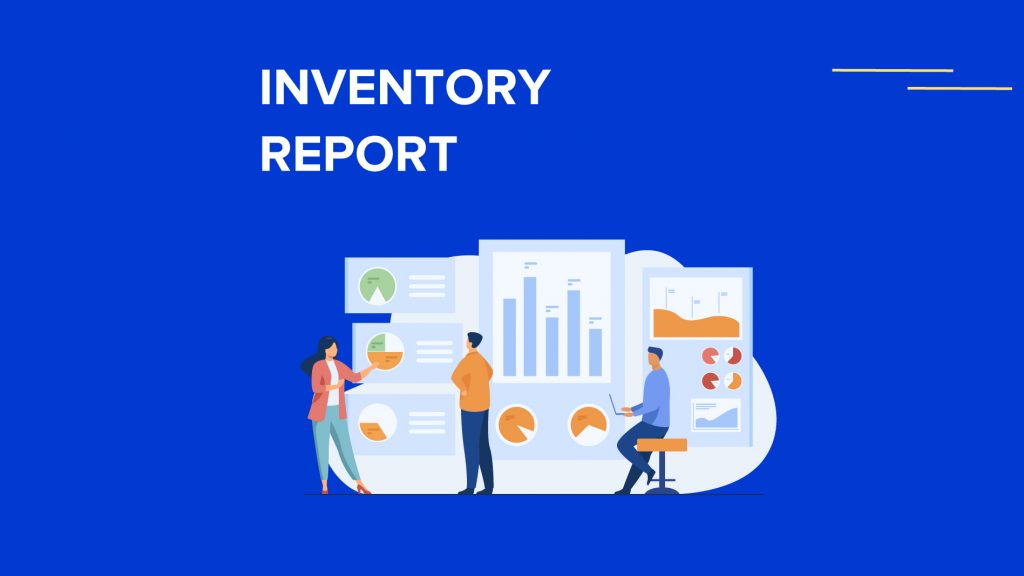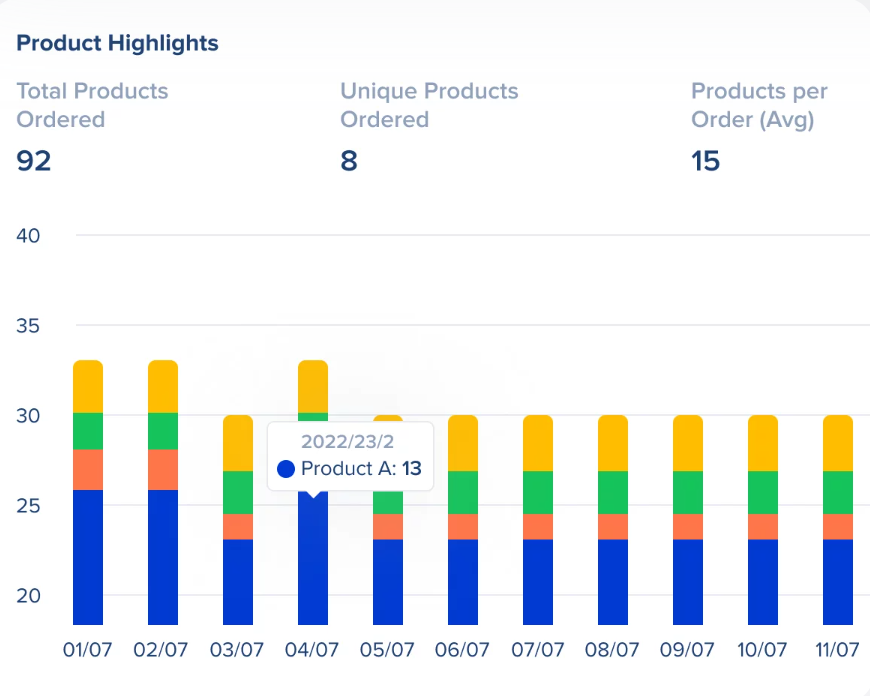An inventory report is a summary of the inventory that the company has under control. Businesses should prepare an inventory report on a timely basis to maximize the efficiency of their inventory selling process.

Why Do Businesses Need An Inventory Report?
Inventory Performance Evaluation
One of the critical purposes of preparing an inventory report is to evaluate the performance of a given inventory item. Inventory reports enable the sellers to understand which products sell the fastest and which take more time to sell. Based on this analysis, sellers allocate their warehouse spaces more efficiently to access the inventory items that sell the quickest. Additionally, sellers take note of the items that should no longer be purchased and the ones that should be bought in a greater quantity.
Staying Organized
Inventory is in a consistent movement of products. Hence, losing track of the inventory might cause sellers some product or sales losses, the roots of which might be hard to find later. Inventory reports solve this issue as they assist in keeping track of inventory and all the data related to it. As a result, you have up-to-date data to rely on and are aware of concerns regarding your inventory.
Long-term Planning
The inventory reports serve as a guide for your strategic planning. Particularly, analyzing the previous performance data of your inventory and learning the patterns of each inventory item allow you to make plans for the future amounts, storage options, and distribution mechanisms of your inventory. As a result, you step ahead of your competitors by predicting what is awaiting you.
Avoiding Stockout
As your business grows, you need more inventory compared to the previous years. Because of the stockout, you fail to have enough inventory to please your customers, which might result in losing them forever. Therefore, being prepared for possible demand fluctuations is crucial, where inventory reports play a vital role.
To determine the estimated amount of needed stock, you can use prediction methods based on your previous inventory performance data. If your reports are accurately prepared, which means your previous sales data is not distorted, the analytical methods will help you predict the future performance of your inventory. This, in turn, will help you accurately update your inventory.
Types of Inventory Reports
Let’s have a closer look at which type of inventory reports you should have.
Inventory Performance Report – The Big Picture
This is the big picture of how your business is doing in general. More precisely, the inventory performance report shows the best- and worst-selling inventory items and provides in-depth details into their selling progress. An important metric you will come across in this report is the inventory turnover ratio, which, in simple terms, demonstrates how quickly you sell your inventory during the given period.
On-Hand Inventory Report – The Current State of Your Inventory
As the name suggests, an on-hand inventory report displays all the products currently available on the company’s storage. Consequently, this report includes details such as the product’s name, SKU, quantity, value, and a short description.
Sales Report – The Sales for a Given Period
If you are a big company and a growing business that has adopted a multi-channel integration with different e-commerce platforms, preparing a sales report could help you have more precise accounting information. In particular, sales reports will present all the transactions across different channels for a given period.
Inventory Valuation Report
The inventory valuation report pictures the potential profitability of your inventory. It shows the total retail value you have bought your on-hand merchandise and presents its potential profit value. In more simple terms, a valuation report allows you to see how much you spent on your inventory. Then, it tells you how much profit you should expect from selling it.
How To Create An Inventory Report?
For creating an inventory report manually, you can use an inventory report template or simply input your data into Google Spreadsheet.
Here are quick steps for creating an inventory report:
- List your products in a single column by giving them names that you would recognize easily whenever you open the report.
- Create a column with the SKUs of your inventory items. Stock keeping units (SKUs) are the identification numbers of your inventory items that you will be using to search the inventory items on your database.
- Next, create a column for brief descriptions of your inventory items.
- In 2 different columns, state the cost of purchasing your inventory and the value you are looking forward to selling your inventory.
- Lastly, add a column with the date when the inventory item was purchased.
This is the most basic structure of the inventory report you can create in spreadsheets.
But do you want to stop there?
Enhance Inventory Reporting with a Specialized Inventory Management Software
Imagine if you could have professionally-crafted inventory reports whenever you want with a few clicks. That’s possible, and it’s an advanced approach that the most developed companies go for. So, if you want to transfer to advanced automated solutions from your old kind of pen and paper, that’s a high time to do that.
Preparing an inventory report through software will save significant time. It will free you from human errors, update automatically, and integrate with multiple channels smartly.
If this sounds more attractive to you than the traditional inventory report system, you should check out eSwap – an automated inventory management tool.
eSwap’s Analytics and Reporting feature automatically generates detailed inventory, sales, purchase, and return reports for you. The only one-time manual input required from you is signing up to eSwap and linking your sales accounts from eBay, Amazon, and other top marketplaces to eSwap.

Here’s an easy guide to doing that.
- Sign up to eSwap (if you want to do it for free first, click on this link).
- Once you have your eSwap account set up, check how you can integrate your accounts on marketplaces in eSwap integrations.
eSwap allows you to manage your stock for every connected marketplace channel. Consequently, the platform prepares inventory reports for all your marketplace accounts separately.
Final Thoughts
An inventory report summarizes the stock that the company owns. Consequently, its primary benefits include inventory performance evaluation, organization, long-term planning, and avoiding stockout. Among many inventory reports, the key report types include inventory performance reports, on-hand inventory reports, sales reports, and inventory valuation reports.
While options are available to create your inventory reports manually, using automated software like eSwap will make the process faster and more efficient.







